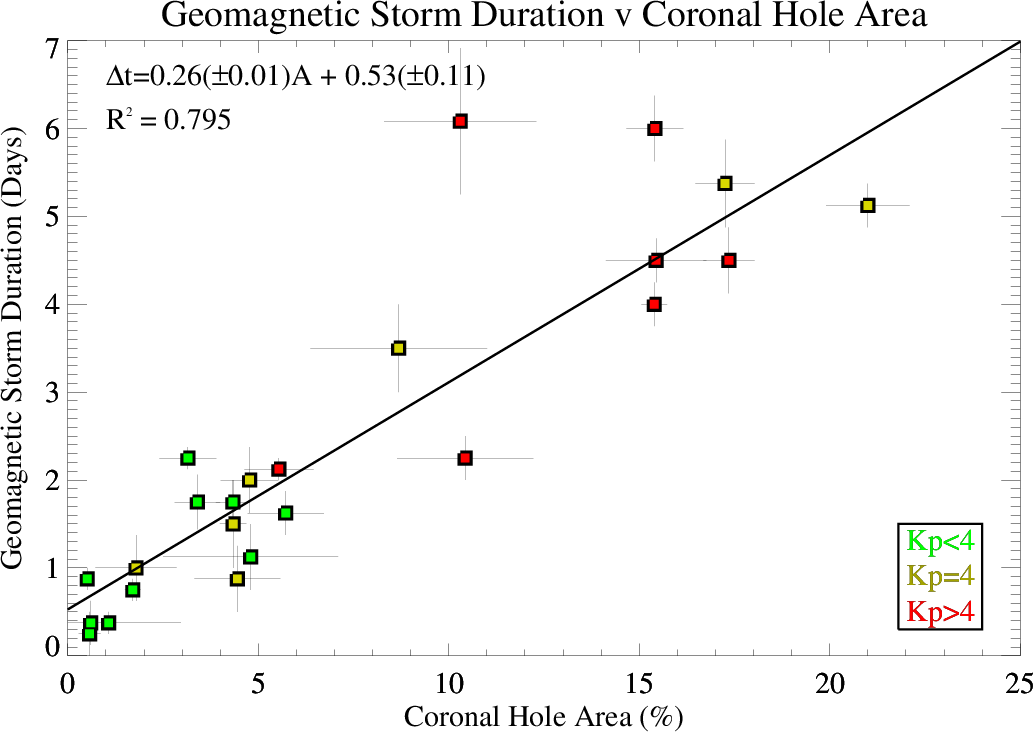- The paper introduces CHIMERA, a novel algorithm that automates coronal hole segmentation using multi-thermal analysis of SDO AIA images.
- It employs intensity ratio analysis across 171 Å, 193 Å, and 211 Å passbands combined with magnetogram validation to enhance detection accuracy.
- The method generates daily CH maps in approximately 30 seconds, aiding improved solar wind prediction and geomagnetic storm forecasting.
Automated Coronal Hole Identification via Multi-Thermal Intensity Segmentation
Introduction
This paper introduces CHIMERA, an automated algorithm for the identification and segmentation of coronal holes (CHs) based on multi-thermal intensity segmentation. Coronal holes are significant for space weather forecasting due to their association with high-speed solar wind streams, which can lead to geomagnetic storms upon interaction with Earth's magnetosphere. Existing methods for CH identification rely predominantly on single EUV passband data. CHIMERA advances the state-of-the-art by utilizing multi-thermal images from the Atmospheric Imaging Assembly (AIA) on the Solar Dynamics Observatory (SDO), improving the accuracy of CH boundary detection through the analysis of intensity ratios across three passbands (171~Å, 193~Å, and 211~Å).

Figure 1: AIA EUV images in six passbands taken on 22 September 2016 with a CH located at the central meridian.
Methodology
CHIMERA leverages intensity segmentation across three EUV wavebands to identify CHs based on their distinct thermal and density properties. The algorithm processes the AIA images to segment pixels exhibiting characteristics similar to known CHs, characterized by low density and temperature compared to the surrounding corona. Importantly, the segmentation lines are dynamically adjusted to account for instrument degradation or solar cycle intensity variations.

Figure 2: A flowchart describing the operation of CHIMERA.
The segmentation process involves plotting pixel intensities in different passbands, identifying clusters representative of CH properties, and refining these segments through magnetogram analysis to ensure that only true unipolar CH regions are retained.

Figure 3: Intensity cuts across the CH region at central meridian on 22 September 2016.
Verification and Comparison
The paper demonstrates CHIMERA's performance through comparisons with existing CH detection methods, including manually drawn, automated, and model-based segmentations. CHIMERA shows strong alignment with manually segmented maps and provides detailed boundary definitions comparable to other automated systems while preventing fragmentation common in clustering algorithms like SPoCA.

Figure 4: Optimum intensity segmentation line fits in log space and intensity space.
Results and Applications
CHIMERA offers robust CH extractions with a runtime of approximately 30 seconds per analysis, automatically generating daily CH maps available on solarmonitor.org. By extracting properties like area, centroid, and magnetic polarity, CHIMERA aids in the improved prediction of solar wind properties and geomagnetic storm characteristics at 1 AU.

Figure 5: A comparison of CH segmentations for 24 October 2016 from various sources.
Statistical analyses demonstrate relationships between CH properties, such as area and geomagnetic storm duration, contributing to refined space weather models and forecasts.

Figure 6: Scatterplot showing the relationship between CH area and geomagnetic storm duration.
Conclusions
CHIMERA represents a significant step forward in automated CH detection, offering multi-thermal segmentation for improved identification accuracy. While the algorithm efficiently handles CH classification, it faces challenges with occulted CHs near the solar limb. Future work could integrate multi-viewpoint data to mitigate these limitations.
The potential for CHIMERA to interface with solar wind prediction models and extend to other coronal features is significant, promising advancements in space weather forecasting and coronal feature analysis.





